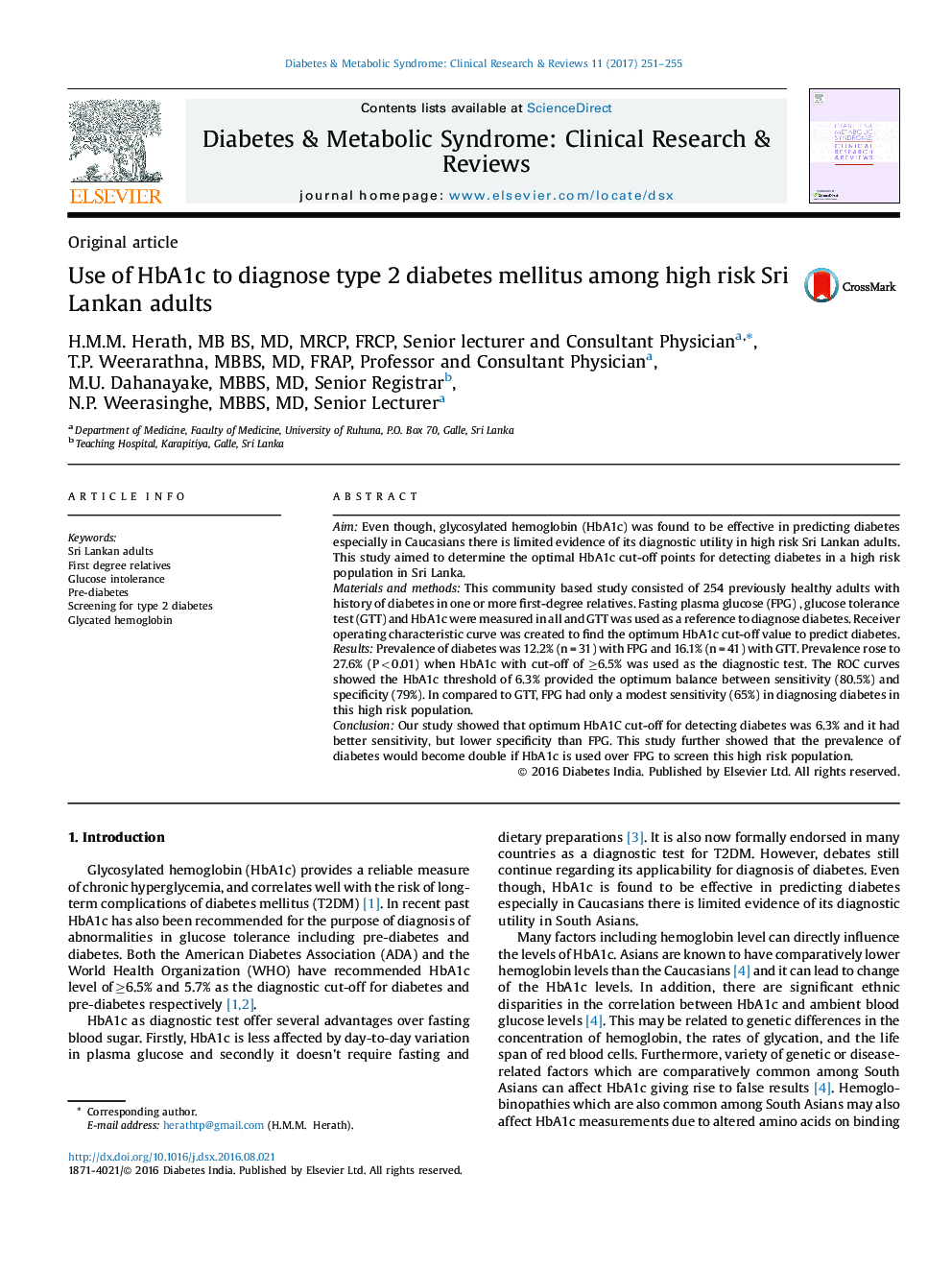| کد مقاله | کد نشریه | سال انتشار | مقاله انگلیسی | نسخه تمام متن |
|---|---|---|---|---|
| 5601671 | 1574910 | 2017 | 5 صفحه PDF | دانلود رایگان |

AimEven though, glycosylated hemoglobin (HbA1c) was found to be effective in predicting diabetes especially in Caucasians there is limited evidence of its diagnostic utility in high risk Sri Lankan adults. This study aimed to determine the optimal HbA1c cut-off points for detecting diabetes in a high risk population in Sri Lanka.Materials and methodsThis community based study consisted of 254 previously healthy adults with history of diabetes in one or more first-degree relatives. Fasting plasma glucose (FPG) , glucose tolerance test (GTT) and HbA1c were measured in all and GTT was used as a reference to diagnose diabetes. Receiver operating characteristic curve was created to find the optimum HbA1c cut-off value to predict diabetes.ResultsPrevalence of diabetes was 12.2% (n = 31) with FPG and 16.1% (n = 41) with GTT. Prevalence rose to 27.6% (P < 0.01) when HbA1c with cut-off of â¥6.5% was used as the diagnostic test. The ROC curves showed the HbA1c threshold of 6.3% provided the optimum balance between sensitivity (80.5%) and specificity (79%). In compared to GTT, FPG had only a modest sensitivity (65%) in diagnosing diabetes in this high risk population.ConclusionOur study showed that optimum HbA1C cut-off for detecting diabetes was 6.3% and it had better sensitivity, but lower specificity than FPG. This study further showed that the prevalence of diabetes would become double if HbA1c is used over FPG to screen this high risk population.
Journal: Diabetes & Metabolic Syndrome: Clinical Research & Reviews - Volume 11, Issue 4, OctoberâDecember 2017, Pages 251-255